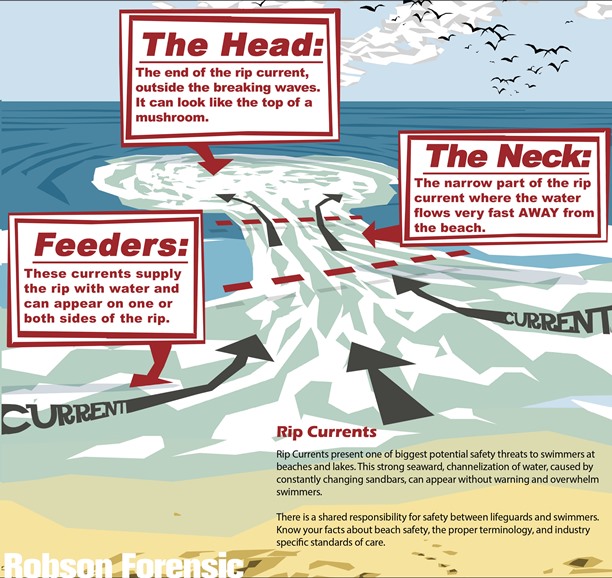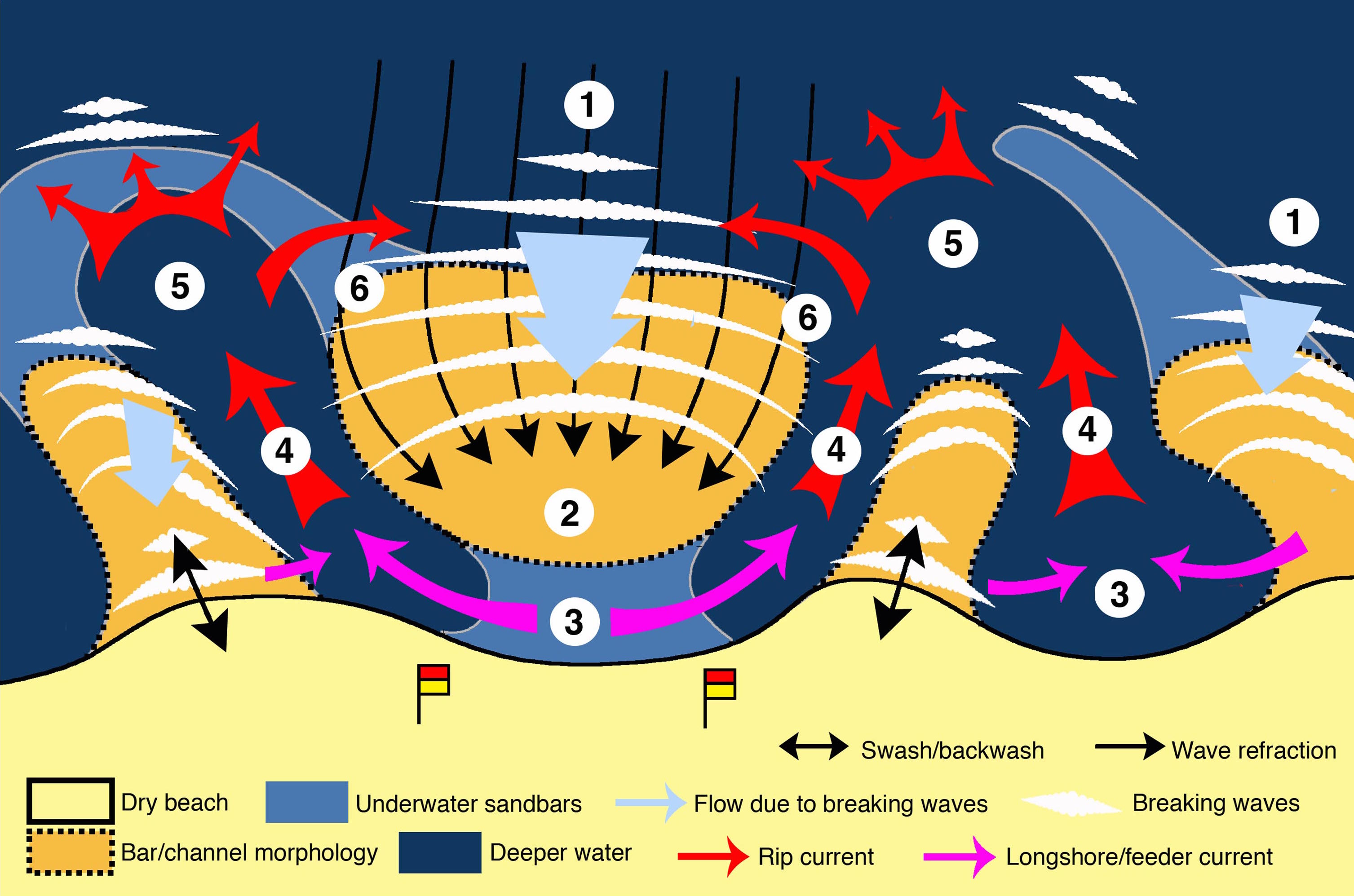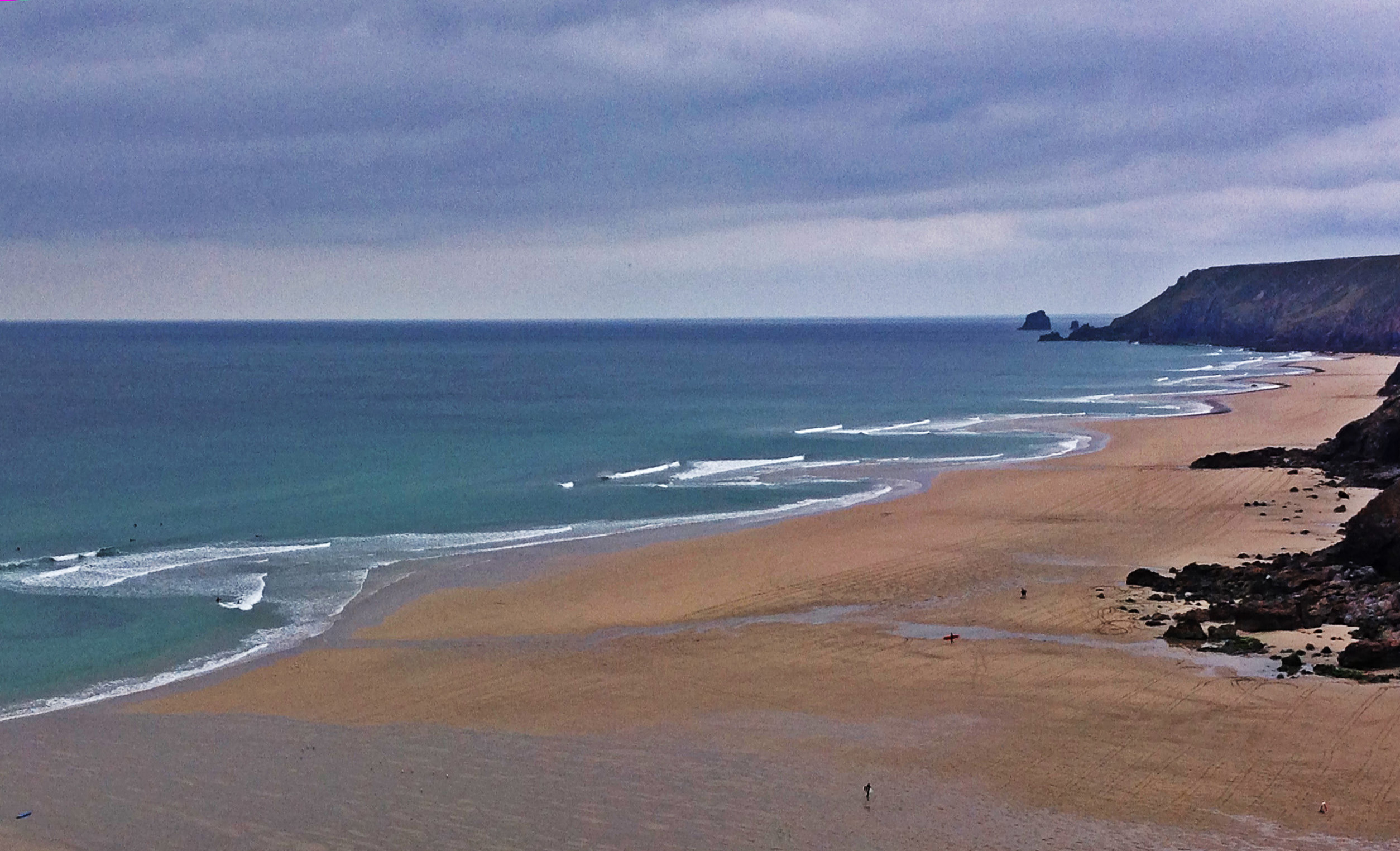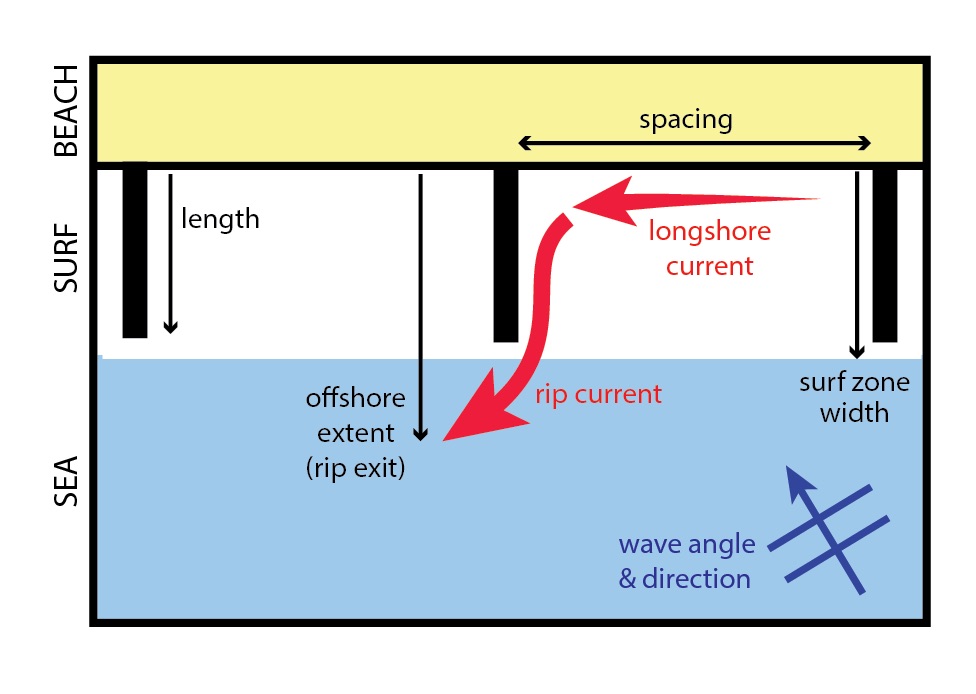Rip currents are responsible for around two thirds of all rescues carried out by RNLI lifeguards in the UK; in Australia, they’re deadlier than cyclones, bush fires, floods, and shark attacks combined. Rip currents can be killers — but they’re generally speaking harmless to those who know what they’re up against. So whether you’re learning to surf or just spending the day splashing around at the beach, it’s essential you understand how rip currents work, what to do if you get caught in one, and why those who call them riptides are gravely, gravely mistaken.
What is a rip current?
A rip current is a body of water moving back out to sea, and often dragging unsuspecting swimmers and surfers with it. When water is pushed towards the shore by waves — which break over sandbars, where the water is shallower — it flows back out to sea following the path of least resistance. This path consists of gaps in the sandbar, in between where the waves are breaking. Rip currents can be identified by waveless channels of rippled, possibly discoloured water — they look a bit like rivers, basically, flowing out through the surf zone. Often, noticing the lack of waves and thinking it the safer or less challenging option, inexperienced beach-goers will choose to swim exactly where a rip has formed.



In shallower water, the flow of water will sometimes travel parallel to the shore, towards the main channel of water directed seawards. In the anatomy of a rip current, this is known as the “feeder”, and is essentially the water seeking out that gap in the sandbar where it can escape back out to sea. As the main channel of seawards flow (sometimes called the “neck”) passes beyond the breaking waves, it loses impetus, mushrooming into the “head” as the flow of water slows down.
The above refers primarily to beach breaks, where waves break over a sand bottom and rip currents are most prevalent, but the basic principle applies to reef breaks too.



